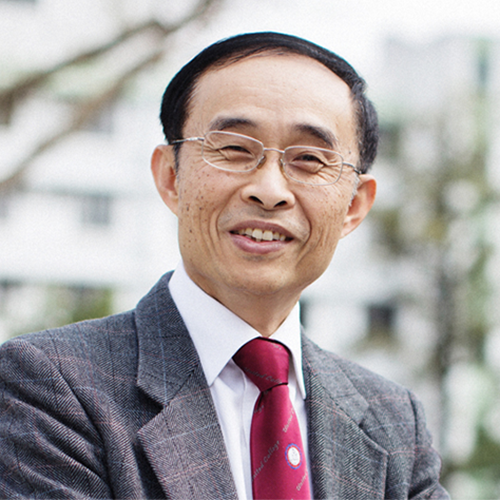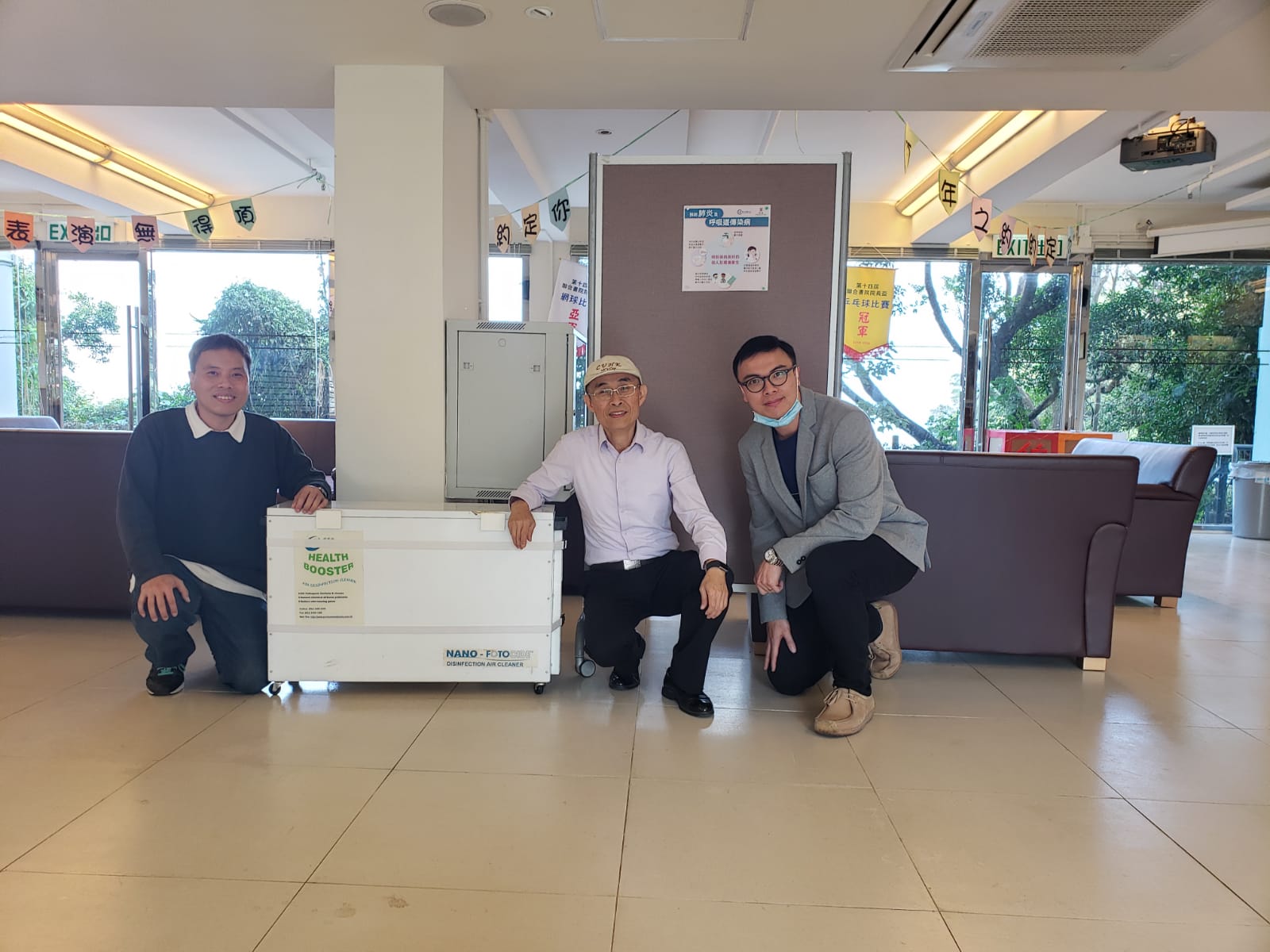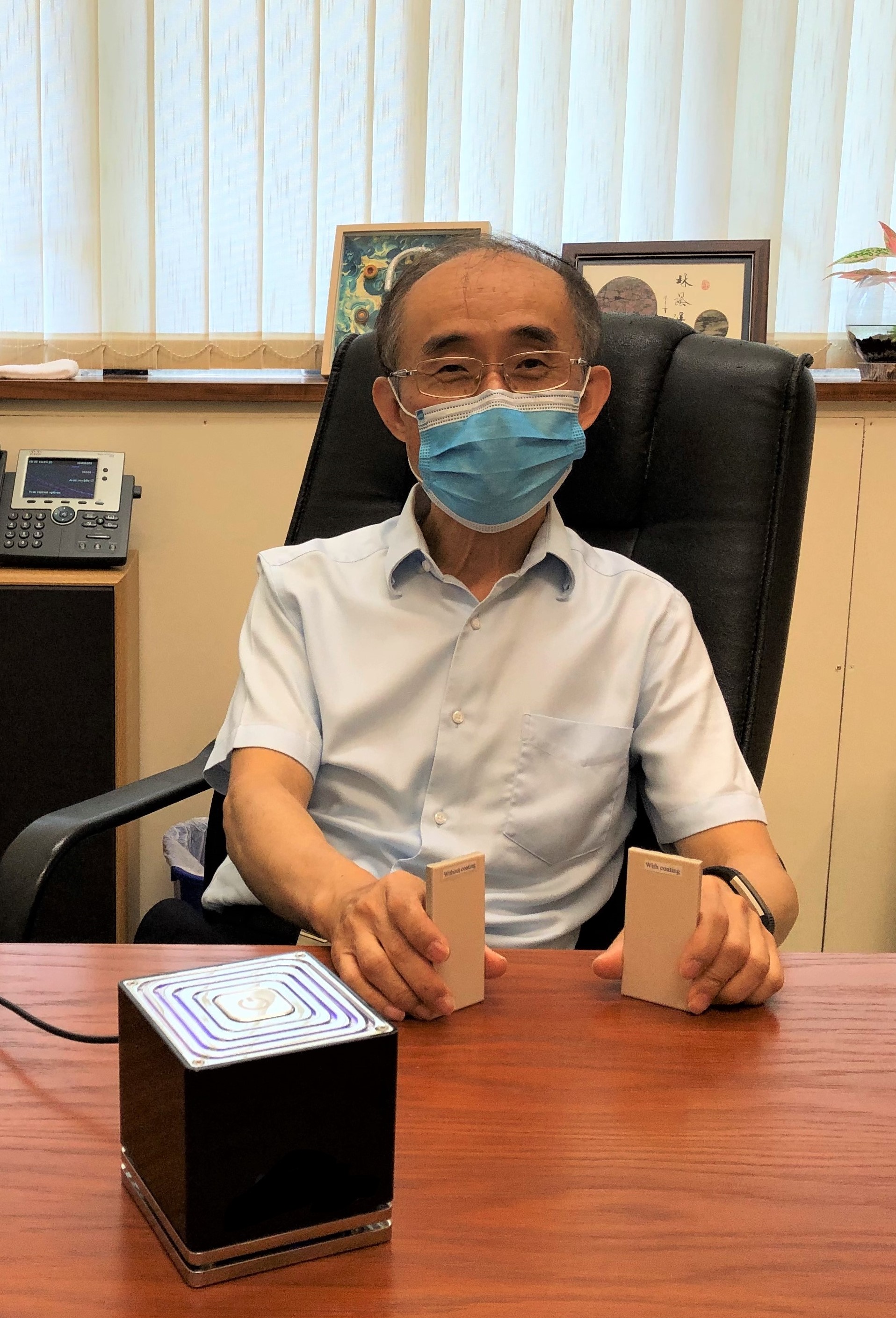Prof. YU Chai Mei Jimmy
Department of Chemistry
Our Eminent Scientists @ CUHK:
The Knowledge Transfer Pioneer
Professor YU Chai Mei Jimmy joined CUHK since 1995, apart from contributing his expertise to the research of photocatalysis, he also devotes himself to the work of knowledge transfer since 2002. He takes up the role of Head of United College in 2012 to lead more than three thousand students and staff members. How does he wear different hats through all the years? Being one of the pioneers of knowledge transfer, what does he think about the prospects of scientific research in Hong Kong?
A Down-to-Earth Chemist
YU’s extensive research interests range from nanomaterials, photocatalysis to solving environmental problems with chemistry. His awareness towards environmental issues grew during his studies in the US where environmental protection had become a mounting concern there three decades ago. Back to 2004 when YU was the Chairman of the College Environment Committee, he led the installation of solar water heating system, which was the first of its kind among all local universities, on the roof of Cheung Chuk Shan Amenities Building with the generous support from the College’s Endowment Fund and the University. With its success, the University received funding from the government to install solar-powered water heaters in 27 student hostels and the University Swimming Pool in 2007.
The prominent researcher in photocatalysis not only contributes his knowledge to the field, but has also developed “sol-gel derived nanosized titanium dioxide coating”, a technology which can oxidize most known organic pollutants into harmless water and carbon dioxide under ultraviolet (UV) light. The simple, easy-to-use, and cost-saving photocatalytic nanomaterials can be applied to buildings and filtration elements of water and air purifiers for disinfection in an effective and reliable manner. YU’s team went the extra mile to refine the technology by increasing the contact of surface area between pollutants and photocatalyst and altering the sol-gel formula. The improvement made the materials flexible to be coated on different surfaces and the reaction easier to be initiated by an expanded light spectrum, enhancing the purification efficiency as a whole. It is learnt that with the refined technology, titanium dioxide in the coating can exert its photocatalytic power for more than twenty years.
From Laboratory to Commercialisation
YU’s eminence as an expert in photocatalysis can be seen in the six patents on fabrication and application of nanosized photocatalytic materials that he has received. His research had aroused the attention of representatives from the environmental engineering industry in the late 1990s that they extended invitation to him for employing his technology into their high-end water treatment and air purification systems. It was also the Innovation and Technology Fund (ITF) newly launched in 1999 that helped the commercialisation a lot, as the government offered a maximum of 90% project cost to universities while the industries supported the remaining 10% of cost for turning R&D projects into products. His successful collaboration with the industries for translating research impacts other than academic in 2002, which now has become more valued in the academia, established YU as a knowledge transfer pioneer of great insight.
An air disinfection system with YU’s photocatalytic technology was placed at the lobby of Bethlehem Hall of United College in January 2020.
(From left: Prof. LEE Hung Kay, Associate College Head of UC; Prof. Jimmy YU; and Dr. LEUNG Tak Wah, Hall Warden)
The All-Purpose Photocatalytic Products?
The COVID-19 pandemic has created huge need on disinfecting and sanitising services and products, including different kinds of nano photocatalytic disinfectant products available in the market. The photocatalysis expert expressed his concern towards their quality and effectiveness. “‘Catalyst’ is something that speeds up the chemical reaction without changing itself. The so-called ‘photocatalytic products’ are applied in the form of spray which is vulnerable to wear and tear, compared to coating onto surfaces that provides continuous disinfection. So where will these substances eventually go? Will they be absorbed by human bodies or the environment?”, added YU. He reminded customers to keep an eye on the products’ effectiveness and their safety towards customers and the environment when purchasing and using them.
Nurturing Innovation and Technology Entrepreneurs
YU sets his sights high that he leads his research team to work on refining the activation of photocatalysis by UV LED. Comparing with UV fluorescent tube, UV LED costs much cheaper and causes less environmental pollution. In recent years, his technology is licensed to a French manufacturer and has been employed in its air purification system. The system has been sold to over 3,500 customers worldwide and is further modified into a portable one which can be used in small spaces such as car interiors and bedrooms.
The small black box is the air purifier employing YU’s technology produced by a French manufacturer. The tiles that he was holding were coated with nanosized titanium dioxide; they have been used for twenty years and are still in good shape.
YU passed on knowledge to young scientists without hesitation. He recalled that the creative idea of “self-sanitising door handle” impressed him a lot when it was introduced by two secondary school students, WONG Sum Ming and LI Kin Pong a few years ago. He was interested in making this dream come true and thus invited one of his postgraduate students to join this experiment by exploiting his technology of nanosized titanium dioxide coating. Their endeavour has turned the idea into an innovation receiving different international awards and the Technology Start-up Support Scheme for Universities (TSSSU) in 2017-18 for setting up a start-up. Many organisations in the public sector, such as Cyberport, HKSTP, Hospital Authority, CUHK Medical Centre, etc., are now using the patented products to minimise the risk of infection by contact and enhance hygiene of the places. One of the inventors, WONG has also joined the Science Faculty to pursue his undergraduate studies and scientific research. “The creativity that our young generation has can never be overlooked. The creative spark from them may sometimes offer fresh insights into the development of our innovation and technology industry”, he added.
His technology was licensed to a local innovation technology start-up in 2019 for commercialisation. The products are now widely adopted by organisations in the public sector, including Cyberport, HKSTP, Hospital Authority, CUHK Medical Centre, etc.
(Photo Credit: James Dyson Award)
Opportunities and Challenges Ahead
Knowledge transfer has now been a trend in the innovation and technology industry, how can new joiners get a piece of the action? The pioneer shared one of his tips, which is making good use of the funding opportunities available. Schemes like the ITF offers incentives for researchers to conduct translational and collaborative applied research by reducing the investment risks that industrial partners have to bear through government’s financial support. Though the heavy workload on reporting and administrative work are deterring many researchers from applying for the grants, YU shared a different view, “It’s our responsibility to report on the progress and expenses for such a huge grant. I would rather suggest hiring professionals to prepare the reports, and we would just focus on the teaching and research work”.
Securing funding is a problem suffering many researchers who wish to join the industry while finding places and spaces to start is another. He suggested new joiners renting the co-working spaces at the HKSTP to ease the burden; and a piece of good news to researchers, students, and industrial partners is that InnoPort, the CUHK’s hub for innovation located near the MTR station has recently been open to nurture start-ups.
He also found the facilities supporting knowledge transfer nowadays are more comprehensive. To start a business, researchers have to take the first step and strengthen their entrepreneurial mind. Establishing spin-out companies can be a good choice if you are confident of your research and its output; participating in conferences and workshops held by organisations like the Hong Kong Productivity Council and the Trade and Industry Department is another great opportunity to present your work, expand your network, and more importantly, explore possibilities for future collaboration.
The scientific research work of Hong Kong would make a greater impact if there were more resources from the government. The amount of funding provided by the National Natural Science Foundation of China has increased from tens of thousands to nearly a million nowadays. On the other side, the amount of General Research Fund (GRF) that each research project receives drops these years compared with that two decades ago; such a drop in research support not only hinders the research progress, but also undermines the confidence of our young scientific innovators in pursuing their career locally, posing challenges to the government’s prospect of knowledge-based economic development of the city.
Catalysts for Revitalising Life
Conducting research and taking up college duties are like chalk and cheese; entering the eighth year as Head of United College, YU never loses his enthusiasm for scientific research. He enjoys participating in college activities to expand his social network, and finds pleasure in meeting colleagues from different units to open up opportunities for collaborative research. The college duties that he takes up are not just a sense of responsibility, but also the catalysts for revitalising his life.
Text: Angela HUNG | Editing: Cindy SUNG





